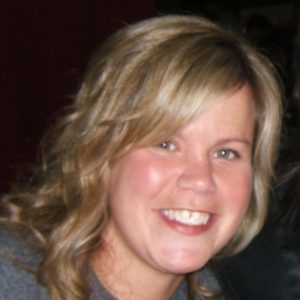Ditch the Basic Business Bio and Write Your Whyography Instead
By Chris Olsen
 What do you do? This is quite possibly the most commonly asked question at networking events and dinner parties and on blind dates. In each of these settings, it leads to responses that include job titles: I’m a bookkeeper. I’m a floral designer. I’m a writer. And an answer like that leads to how long you’ve been doing the work, the roles you’ve held in the past, perhaps where you went to college—all the basics.
What do you do? This is quite possibly the most commonly asked question at networking events and dinner parties and on blind dates. In each of these settings, it leads to responses that include job titles: I’m a bookkeeper. I’m a floral designer. I’m a writer. And an answer like that leads to how long you’ve been doing the work, the roles you’ve held in the past, perhaps where you went to college—all the basics.
We’ve been conditioned to communicate this way. We focus on WHAT we do instead of WHY we do it. Those questions and our standard answers start as we’re getting ready to enter the professional world. We create a basic business bio chock full of facts and key words and phrases that a potential school, employer, or business partner might look for. It includes a whole lot of stats and very little story. These classic answers barely scratch the surface of what makes you uniquely you. Your LinkedIn profile is the perfect example of this.
Ditching the basic business bio for a Whyography is a powerful way to connect with others who have similar values. It sets you up for success in your professional life. More than ever, businesses and their investors, employees and consumers are connecting over a shared commitment to making a difference in the lives of others and the world. There is no better time than now to start communicating your WHY with confidence.
Step One: Get Clear on Your WHY
Your WHY is your purpose, your values in action. But before you can lead with it, you have to get clear on it. The best place to start is creating a list of your top 10 values. Choose verbs, which indicate action. Narrow your values down to five by focusing on those you live by rather than those that are aspirational. This Values in Action Tracker activity helps you identify the values that show up in your day-to-day life.
Next, look for connections between your top values and specific people or causes you’re passionate about supporting in your work, your volunteer efforts, etc. This Tiny WHY Statement activity helps to quickly articulate your WHY.
Step Two: Create a Timeline
A Whyography is typically a chronological account of your professional journey. Before you begin writing your story, map out pivotal moments using this Whyography Journey Map. The journey map is designed to help you track important events and people and determine their significance in your story.
Unlike a basic business bio, a Whyography is not a list of highly edited facts and glossy marketing language—it’s intended to be raw, real and relatable. Challenge yourself to look beyond the milestones listed on your LinkedIn profile and tell a new story. Focus on the character defining (and sometimes painful) moments that have a clear connection to your WHY.
Step Three: Master the Science of Storytelling
Understanding how the brain reacts during storytelling is the secret sauce for your Whyography. And it doesn’t call for an advanced degree in neuroscience! Here’s the gist of it: Research demonstrates storytellers can build deep and lasting connections with their audience by stimulating multiple areas of the brain.
To light up the brain with your story, do what screenwriters of blockbuster movies do best—start with a tense or dramatic moment. Starting with tension releases cortisol, a brain chemical that makes your audience alert and even excited.
Next, don’t be afraid to be vulnerable, which releases oxytocin, helping you bond with your audience. And be sure to engage all of the senses as you share the details of your story. This may feel counterintuitive when writing about your career, but that’s the point. Learn more about the neuroscience of storytelling in this video.
Step Four: Use a Simple Story Arc
 As you begin writing your Whyography, a simple story arc like this Whyography Framework helps you pull it all together. First, transfer key moments from your journey map to your story arc. Be selective—not every event on your map warrants a spotlight in your Whyography.
As you begin writing your Whyography, a simple story arc like this Whyography Framework helps you pull it all together. First, transfer key moments from your journey map to your story arc. Be selective—not every event on your map warrants a spotlight in your Whyography.
Start your story with the exposition, which provides an introduction to the main character (you) and sets the scene. Don’t forget to take a page from the screenwriters’ playbook and share a big moment right away. Next, your rising action includes details about what led you to your current work. It builds up to the climax, which is the peak of the action. In a Whyography, the climax is typically when you landed your dream gig, launched your small business, etc. Then, the falling action communicates the problems you’re solving or the impact you’re making through your work. Finally, the denouement (French for conclusion) wraps up your story with your vision for the future.
What’s Next?
Once you’ve finished your Whyography, consider having it professionally edited. Share it on your website, in your LinkedIn profile and with potential clients. And next time you’re at a networking event or dinner party or on a blind date and someone asks WHAT you do, flip the script. Tell them your WHY instead and see where the conversation takes you.
About the author: Chris Olsen is a radio veteran turned communications consultant, educator and author of “Whyography: Building a Brand Fueled by Purpose.” Through her work as a consultant partnering with startups, Chris realized her WHY—to support women-owned businesses in confidently communicating their purpose and impact, setting them up for entrepreneurial success. She created My Founder Story as a platform for doing so.
Category: Contemporary Women Writers, How To and Tips
























